

UV photography: is there an easy solution?
This is my first time photographing with black light – at home, in a quiet and above all dark room.
Winters tend to be rather grey. But I’m more of a colourful guy. Sometimes extremely so.
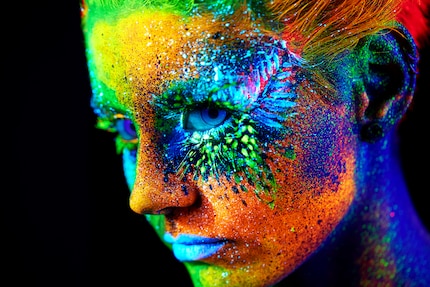
Here’s an example of black light photography. Different colours are determined by ultraviolet light. I like the look and want to do it myself.
First, let’s clear up some confusion, as the term UV photography is ambiguous. In one type of UV photography, UV light is imaged directly. As ultraviolet rays are invisible to humans and cameras, special recording equipment is needed. This isn’t what we’re currently looking at.
Black light photography is easier, as it works with any ordinary camera. You don’t directly capture ultraviolet light, but reflections triggered by UV rays. These reflections are visible to humans and your camera as their wavelength shifts from the invisible UV range into the visible colour range. A surface that behaves this way is known as fluorescent.
You’ll need a special lamp that emits only or almost only UV. Otherwise, normal light would mask the UV effect.
Make sure to work in a room that is very, very dark as well. And last but not least, select motifs with fluorescent surfaces.
Maybe not quite so simple after all. And above all, quite unfamiliar. Which is why I want my first experience to be achieved with minimal resources. Don’t expect pictures like the one shown above. I’ll start modestly.
The UV source
UV sources are available as portable LED flashlights, as lamps for bulb sockets or even as spotlights for the stage. Reading through user reviews, I get the impression that the flashlights are too weak. My first attempt therefore used a lamp for an E27 socket.

According to the manufacturer, it illuminates between 320 and 400 nm. This is known as UV-A – ultraviolet rays closest to visible light. Even though UV-A doesn’t cause sunburns, it’s still anything but healthy for your eyes and skin. Therefore, when the UV lamp is on, I wear sunglasses that also provide coverage on the sides.
Shooting in a spare room
My apartment features a small storage room without windows. It’s perfect: enough room to close the door. Besides, it features the correct light bulb socket, easily accessible above the door.
When I first turned on the lamp, it seemed just strong enough for the small room. Certain objects were illuminated in a blue-violet hue: white paper, cardboard or lightly coloured fabric. But not everything that is white glows. The walls didn’t radiate, nor did plastics or porcelain. Grey newsprint also remained dark.
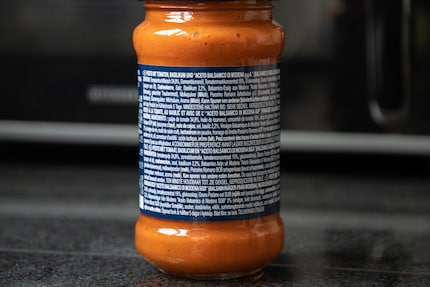
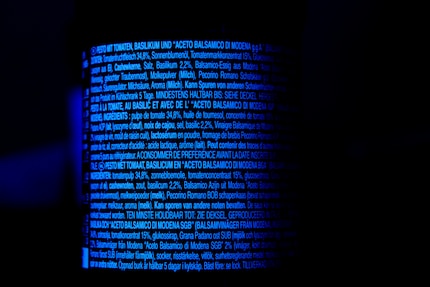
Bleaching agents, also known as optical brighteners, are found in both paper and light-coloured fabric. It’s these brighteners that make materials glow.
This isn’t particularly spectacular, as everything features the same hue. The naked eye perceives this as purple, but in photos it appears blue. I could correct this, but I prefer blue anyway.
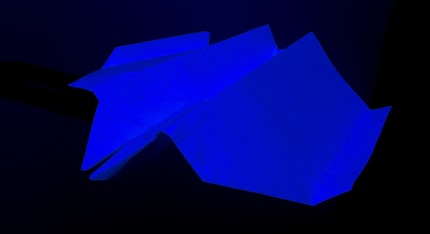
Natural fluorescence
For now, I haven’t purchased any special UV materials. There are also substances around us that fluoresce. However, there are only a few, and they’re sometimes difficult to find. Horse chestnut branches are supposed to fluoresce, but around January they’re rarer than graphic cards. Minerals only glow at shorter UV waves, nothing happens with moss or lichen either. And those beautifully colourful glowing mushrooms you’ll find on the web seem more psychedelic than fluorescent. My supermarket mushrooms, to my disappointment, are neither.
Milk fluoresces weakly; however, in an unappetising colour. At least I finally have a luminous colour other than purple.
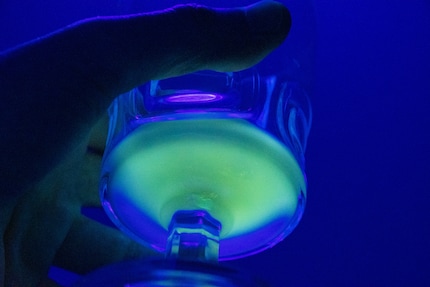
Artificial luminous colours
Seems like the best motif so far remains the lamp itself. But even it is boring in terms of colour.
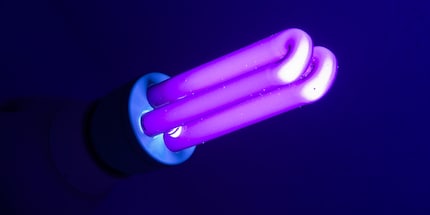
Sometimes fluorescent materials are incorporated into banknotes. It’s one of many features used to distinguish genuine from counterfeit banknotes. Here, a 50-franc note under UV light. I had to hold it pretty close to the lamp to see any effect.
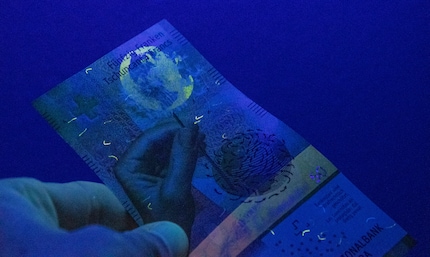
Glow pens also glow on paper. This gave me the idea to look for similar colours in my household. In the end, I did find a plastic box that glows very brightly – and in a shade that goes well with the dark purple background.
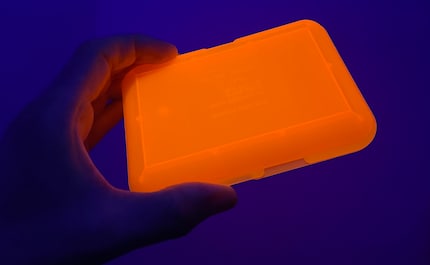
Upgrading for part 2
Nevertheless, I drew several conclusions: without special UV inks, you won’t be able to do much with black light photography. January isn’t cold and grey any more, just cold and blue. My 25-watt lamp is strong enough for distances up to two metres, but you’ll need materials that are highly reflective. Preferably in many different colours.
Specialised stores sell a whole range of these: UV nail polish, UV mascara, UV body paint, UV Hawaiian wreaths … all already waiting for a session in our studio once opportunities for physical contact return.
My interest in IT and writing landed me in tech journalism early on (2000). I want to know how we can use technology without being used. Outside of the office, I’m a keen musician who makes up for lacking talent with excessive enthusiasm.
Practical solutions for everyday problems with technology, household hacks and much more.
Show all

